Summer vacation isn't a vacation when you're experiencing hunger.
It might not officially be summer yet, but for kids and parents, school is almost out, and summer is practically here! Summer vacation brings a lot of images to mind- swimming at the pool, relaxing and reading a good book, playing outside, or one of our favorites, gardening fresh produce at home. However, summer break isn’t a vacation for the numerous youth and families in our area who experience food insecurity. Summer break can last up to 90 days, and without reliable access to meals or meal programs, summer is the hungriest time of year for many children.
Did you know? USDA-funded summer meals only reach 16% of kids who need them during summer vacation?
Summer Food Programs
The National School Lunch Program and several other federal nutrition programs fund the free or reduced-price lunches at school during the year. In the US, 22 million kids get free or reduced-price lunch during the school year, which is an essential source of food for them. However, these meal programs do not continue into the summer. To help with out-of-school hunger, the USDA created the Summer Food Service Program, which enables community leaders to establish summer meal delivery sites around the country. In addition, child nutrition programs received an additional $8.8 billion of federal funding this summer to address the pandemic’s impact on access to free meals.
- Free Meals are provided for children from households with income below 130% of the poverty level or those receiving SNAP (Supplemental Nutrition Assistance Program) or TANF (Temporary Assistance for Needy Families).
- Reduced-Priced Meals are available for children from families who have between 130-185% of the poverty line.
Unfortunately, due to a lack of awareness and access, the summer food programs still only reach 16% of the children who need food assistance. The Summer Food Service Program requires children to eat the meals on-site at the location they are distributed, which can be difficult without transportation. Another barrier is that only 30% of children eligible for free summer meals live in areas that aren’t eligible to host the programs. These programs can only be established in areas where at least 50% of children qualify for free and reduced-price lunches.
- In Westchester County 30% of children who are food insecure do not quality for government benefits. 70% of Westchester food insecure children do quality for assistance but still may not access it.
- Putnam County has as a much higher rate of 51% of children who are experiencing hunger who are unable to access assistance through government funded programs. With 49% of food insecure children eligible for benefits.
The Impact of Summer Food Insecurity
Not knowing where your next meal will come from can create a lot of anxiety. Children who rely on free or reduced meals during the school year especially suffer from food-related anxiety during the summer months.
As children spend more time at home, many household costs go up, including food. 43% of low-income families say it’s harder to make ends meet in the summer, making them even more at risk of food insecurity.
Children who suffer from summer hunger can face more health challenges than their more affluent peers. Many children from low-income families turn to inexpensive, calorie-dense foods during the summer, which lack nutritional value and can lead to higher healthcare expenses for children experiencing obesity. Children living in food-insecure homes are also more susceptible to chronic diseases such as type 2 diabetes, asthma, and heart disease.
Second Chance Food Response
We’ve been collaborating with New Era Creative Space at Dunbar Heights in Peekskill for the last six weeks. Every week we provide three complete meals for the kids and volunteers. We never worry about sending too much because there is plenty of need in the community, and the kids often take leftovers home to their families. Since this housing community is near the outskirts of town, it’s also a food desert, making it difficult for kids to access fresh, nutritious foods. Because of their unfamiliarity with many vegetables – like sweet potatoes – we use a lot of our sneaky veggie recipes to make things kids like to eat but are also filled with the nutrients they need. Last week’s menu included: Dry Rub Chicken with Cole Slaw & Roasted Sweet Potatoes; Lasagna with Turkey & Veggies; and Filet Mignon with Twice Baked Potatoes & Fresh Corn & Zucchini Salad. Meals like our Turkey Pizza Burgers are a great way to balance what kids like to eat with something healthy. We’re also sure to include fresh fruit options with our prepared meals that kids love but don’t always have access to like bananas, oranges, strawberries, apples, and whatever else comes our way!
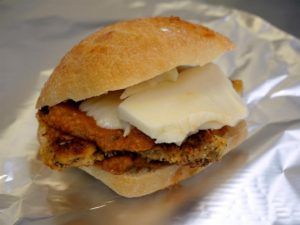

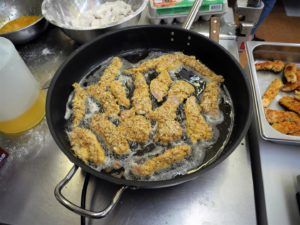
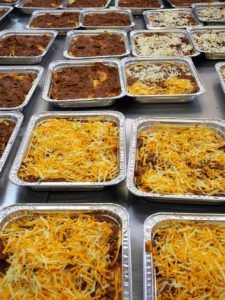
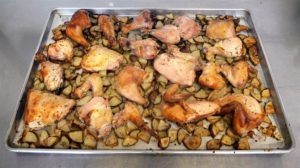
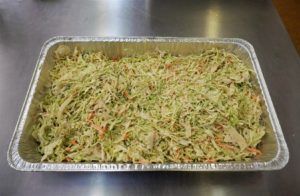
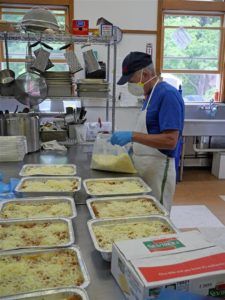
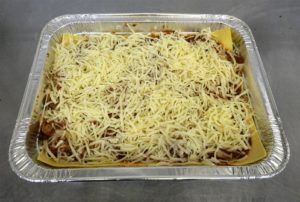
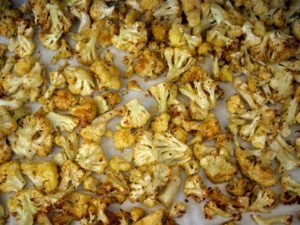
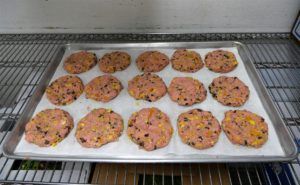
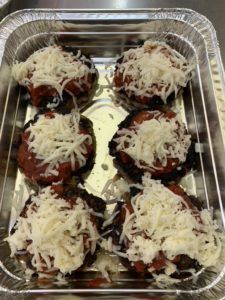
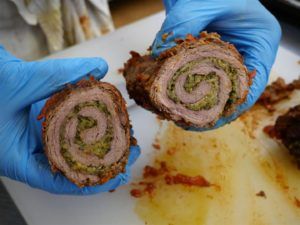

New Era Creative Space offers performing and visual arts, leadership and empowerment, and STEM programming for young people ages 5-18 that instill confidence; foster collaboration, creative problem-solving, and self-expression; and provide opportunities for engagement in social action to build a better world. They invited us to provide meals for their Dunbar Heights location as an extra incentive for kids to join them for after-school help and other community programs. It’s been a successful way to build relationships and feed this neighborhood.
This collaboration is a perfect example of our Community Response Program. The projects may vary, but we always endeavor to preserve space and resources to respond to the shifting food, nutrition, and health needs of the communities we serve. These unique programs sometimes turn into lasting partnerships or simply bridge the gap at a time when extra help is needed.
However, these projects are also usually underfunded parts of our operations. We respond to situations as they arise, and we’re able. With your help, we can continue to provide innovative community assistance that reduces barriers and helps nourish the children and families in the Hudson Valley.
Will you make a donation to ensure we’re able to respond to the needs of our community?